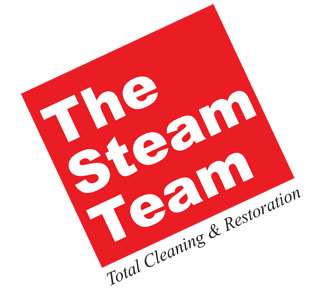Mold Mitigation and Removal in Kyle, Texas After a Big Summer Storm
/Mold Removal in Kyle Texas
The picturesque city of Kyle, nestled in the heart of Texas, often experiences the beauty and power of summer storms. While these storms bring much-needed relief from the Texas heat, they can also create favorable conditions for mold growth in homes and buildings. In the aftermath of a big summer storm, the risk of mold infestation becomes heightened, necessitating swift and effective mold mitigation and removal. In this comprehensive guide, we explore the challenges posed by mold after a summer storm in Kyle, the importance of mitigation, and the steps involved in professional mold removal.
Understanding the Challenges of Mold After a Summer Storm:
Excess Moisture and Humidity: Summer storms in Kyle often bring heavy rainfall and increased humidity. Combined with warm temperatures, these conditions create an environment conducive to mold growth. Excess moisture in the air and on surfaces becomes a breeding ground for mold spores, which can quickly colonize and spread in affected areas.
Water Intrusion and Flooding: Intense summer storms can result in water intrusion and flooding, especially in low-lying areas. Water infiltration into homes or buildings poses a significant risk for mold growth. Moisture can seep into walls, ceilings, and flooring, providing the ideal conditions for mold to thrive if not addressed promptly and effectively.
Delayed Detection: Mold infestations are not always immediately apparent. After a summer storm, homeowners may focus on addressing visible damage such as waterlogged carpets or damaged roofs, inadvertently overlooking areas where mold may be silently proliferating. Delayed detection can lead to more extensive mold problems and increased difficulty in mitigation.
The Importance of Swift Mold Mitigation After a Summer Storm:
Preventing Health Risks: Mold is not just a cosmetic concern; it poses potential health risks to occupants. Mold spores can become airborne, leading to respiratory issues, allergies, and other health complications. Prompt mold mitigation after a summer storm is essential to prevent exposure and mitigate health risks.
Preserving Property Integrity: Mold has the potential to cause structural damage to buildings by feeding on organic materials such as wood and drywall. Swift mitigation is crucial to preserving the integrity of the property and preventing long-term damage that could result in costly repairs.
Minimizing Remediation Costs: Early intervention in mold mitigation helps minimize the overall costs associated with remediation. When mold is detected and addressed promptly, the extent of the infestation is limited, making the remediation process more efficient and cost-effective.
Steps Involved in Professional Mold Mitigation and Removal:
Assessment and Inspection: After a big summer storm, it is essential to engage the services of a professional mold mitigation and removal team in Kyle, Texas. Certified professionals will conduct a comprehensive assessment and inspection to identify the extent of the mold infestation, the type of mold present, and the underlying causes of moisture.
Containment Measures: To prevent the spread of mold spores to unaffected areas, containment measures are implemented. Physical barriers and negative air pressure systems are employed to isolate the affected areas during the mitigation and removal process, reducing the risk of cross-contamination.
Moisture Source Identification and Remediation: Addressing the source of moisture is crucial for effective mold mitigation. Professionals identify and remediate the moisture source, whether it's a leaky roof, plumbing issue, or poor ventilation. By eliminating the source of moisture, the conditions conducive to mold growth are disrupted.
Safe Mold Removal Techniques: Mold removal involves the use of specialized techniques and equipment to safely and effectively eliminate mold colonies. This may include the use of HEPA-filtered air scrubbers to capture airborne mold spores, antimicrobial treatments to kill mold at its source, and safe removal of contaminated materials.
Thorough Cleaning and Disposal: The affected surfaces are thoroughly cleaned and sanitized using appropriate antimicrobial solutions. Contaminated materials that cannot be salvaged are safely disposed of. This may include drywall, insulation, or other porous materials that have absorbed mold and cannot be adequately cleaned.
Post-Remediation Testing: Post-remediation testing is conducted to assess the effectiveness of the mold mitigation and removal process. Air and surface samples are taken to ensure that mold levels have returned to acceptable levels. This step provides assurance that the remediation efforts were successful.
Restoration and Reconstruction: Once mold removal is complete, the focus shifts to restoration and reconstruction. The damaged sections of the property are repaired or replaced, and the property is restored to its pre-mold condition. This may involve rebuilding walls, replacing flooring, and addressing any structural damage that occurred during the mold infestation.
Preventative Measures and Education: Professional mold mitigation and removal teams often provide guidance on preventative measures to avoid future mold issues. This may include recommendations for improving ventilation, addressing potential sources of water intrusion, and maintaining indoor humidity levels within a healthy range. Education on mold prevention empowers homeowners to take proactive steps in safeguarding their properties.
Choosing the Right Mold Mitigation and Removal Professionals in Kyle:
Certifications and Qualifications: Verify that the mold mitigation and removal professionals in Kyle hold relevant certifications and qualifications. Look for certifications from reputable industry organizations, ensuring that the team has the expertise and training necessary for effective mold remediation.
Experience in Storm-Related Mold Remediation: Choose professionals with experience in storm-related mold remediation. Dealing with mold growth after a big summer storm requires a nuanced understanding of the unique challenges posed by water intrusion and humidity, and experienced professionals are better equipped to address these issues.
References and Reviews: Seek references from previous clients or review online testimonials to gauge the reputation of the mold mitigation and removal team. Positive reviews and satisfied clients are indicators of the team's competence and reliability.
Prompt Response: Mold issues require swift action. Choose a mitigation and removal team that can respond promptly to your inquiry and initiate the assessment and mitigation process in a timely manner.
Transparent Communication: Transparency in communication is essential. A reputable mold mitigation team will provide clear explanations of the assessment findings, the proposed mitigation plan, and the steps involved in the removal process. Clear communication builds trust and ensures that homeowners are well-informed throughout the remediation process.
Conclusion:
After a big summer storm in Kyle, Texas, the risk of mold infestation becomes a pressing concern. Swift and effective mold mitigation and removal are crucial for preserving property integrity, preventing health risks, and minimizing the overall impact of mold growth. Engaging the services of certified professionals ensures that the mitigation process is thorough, safe, and adheres to industry standards. By understanding the challenges posed by mold after a summer storm and taking proactive measures in mold mitigation, homeowners in Kyle can safeguard their properties and create a healthier and more resilient living environment.






















